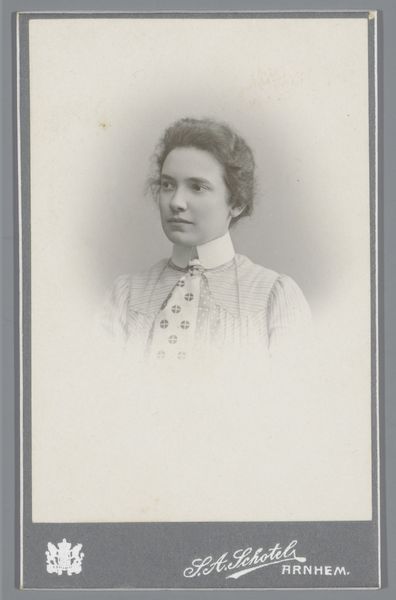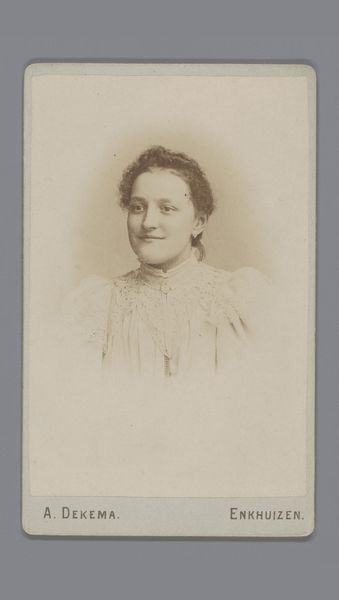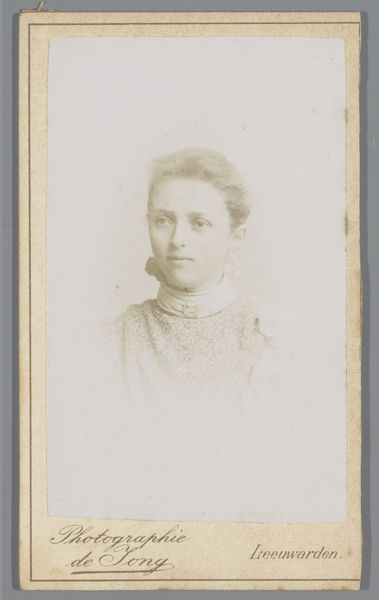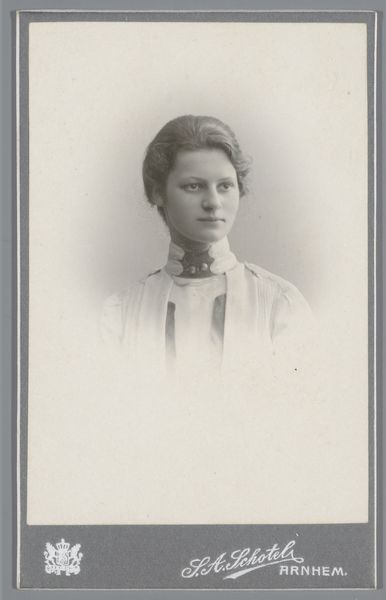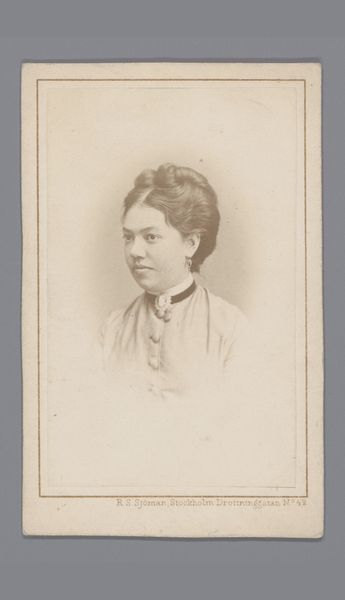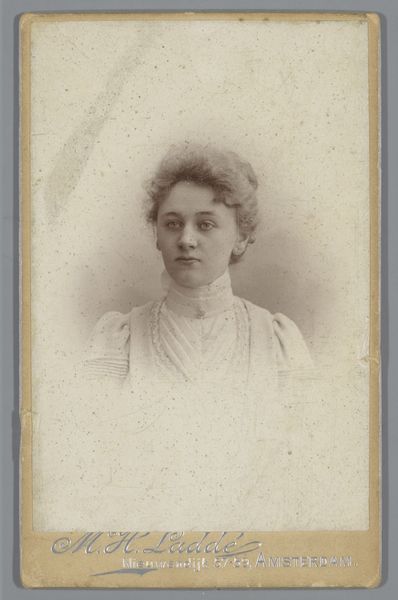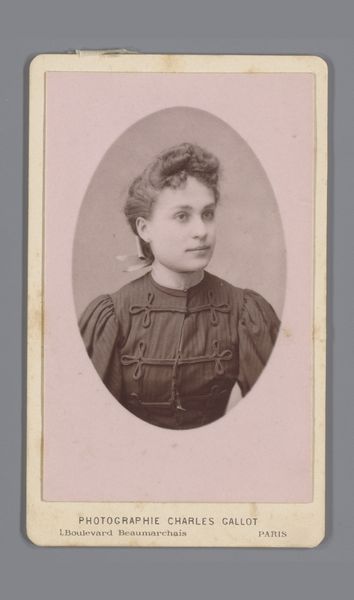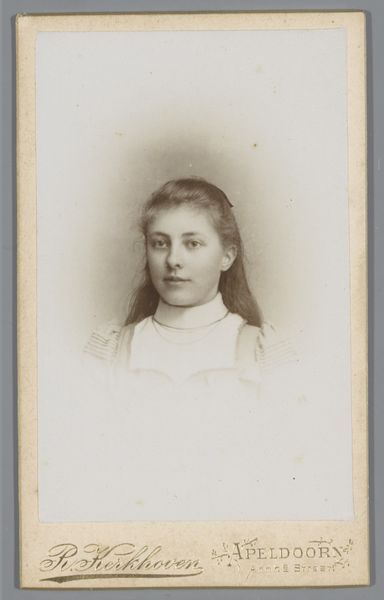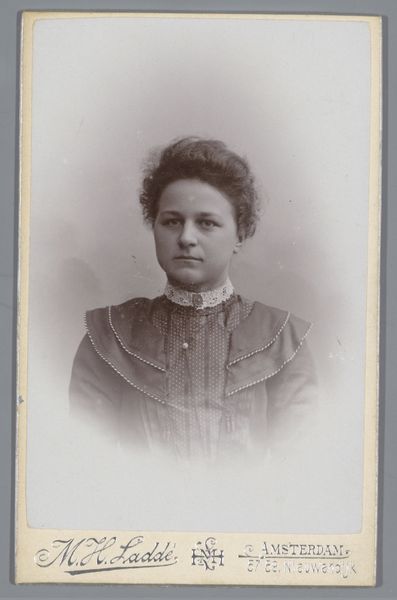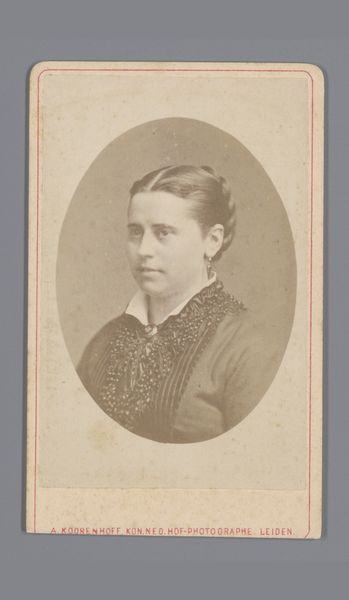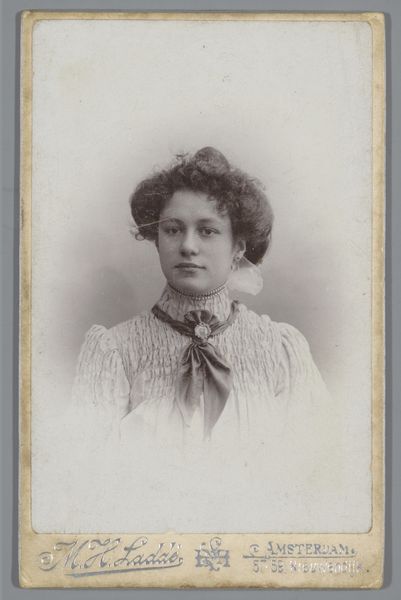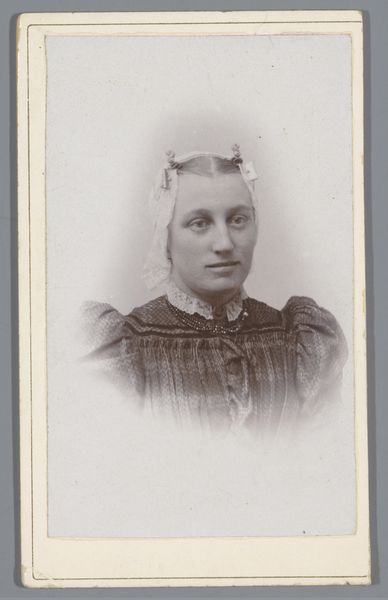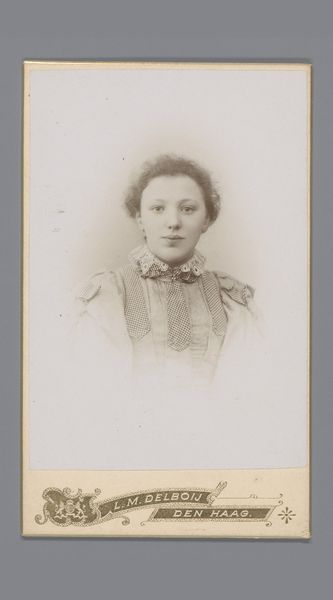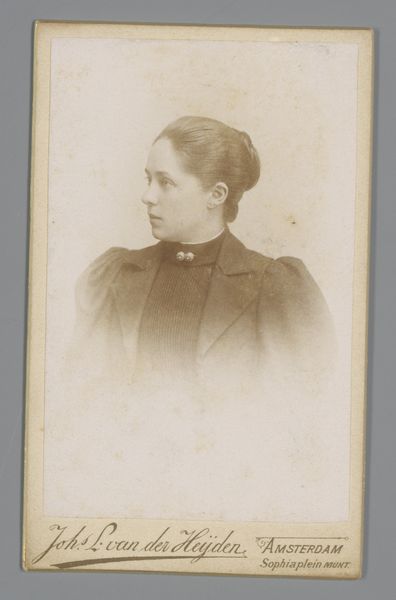
photography
#
portrait
#
photography
Dimensions: height 106 mm, width 65 mm
Copyright: Rijks Museum: Open Domain
Curator: This captivating photograph, "Portret van een onbekend meisje," or "Portrait of an Unknown Girl," was taken sometime between 1902 and 1906 by Stephanus Adrianus Schotel. It's rendered in classic black and white photography of the era. Editor: It's haunting. There's a softness to the light that gives it a wistful, almost melancholic air. I’m immediately struck by the textures— the stark contrast between the smooth face and the patterned fabric around her neck. You can almost feel the starched collar. Curator: Yes, and those details become symbolic. The high collar, the restrained hairstyle - all of it points to a very particular societal expectation of young women at the turn of the century. This isn't just a portrait of a girl; it’s an image representative of a constrained class identity. Editor: Thinking about the materiality— the photographic process itself—I imagine the girl posing, still and rigid, perhaps for several minutes, under hot studio lights. It's a manufactured moment of serenity extracted from the real, more dynamic material conditions of her life, a life that’s being actively performed and preserved for the lens. The question is how was this photography made and who benefited from the process? Curator: An important consideration. The stark formality in the photograph certainly emphasizes that power dynamic. Note that her direct gaze connects with the viewer, but is slightly offset—never fully trusting the spectator across time. Yet, it hints at a vulnerability, a subtle invitation for empathy. It's fascinating to wonder about her life, her hopes, her place in society. Photography like this captures more than just a likeness. Editor: For me, the allure rests precisely in the limitations imposed by the materials and technology. Photography at this time—the chemistry, the printing processes—it wasn’t about perfect mimicry; it was about distilling a presence. In viewing the social construction of image-making we ask about the values projected into making such portraiture possible. Curator: Ultimately, her anonymity gives the image a universal appeal. She becomes a representative figure, a conduit to understanding an entire era and its impact on feminine identity. Editor: An astute insight. What once may have appeared commonplace becomes extraordinary as we uncover lost methods of production and the image's quiet insistence of resistance over time.
Comments
No comments
Be the first to comment and join the conversation on the ultimate creative platform.
